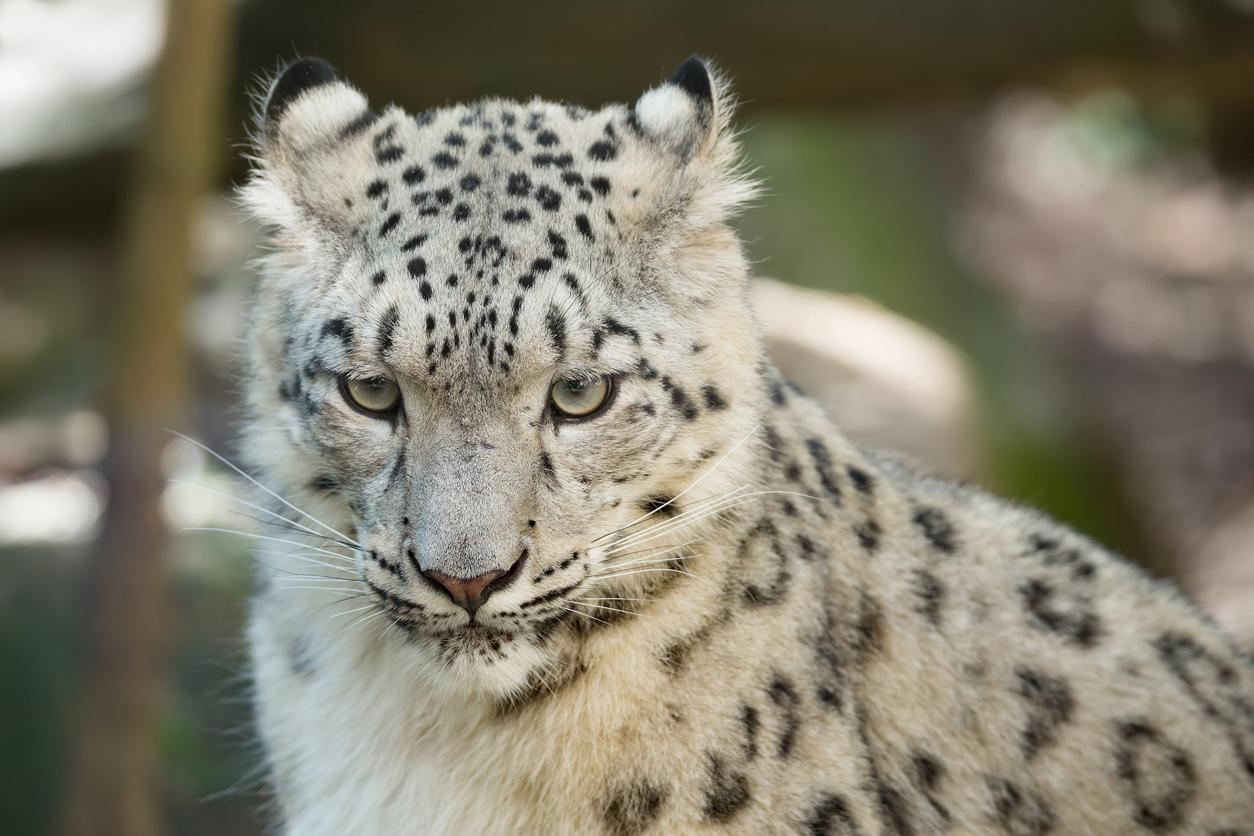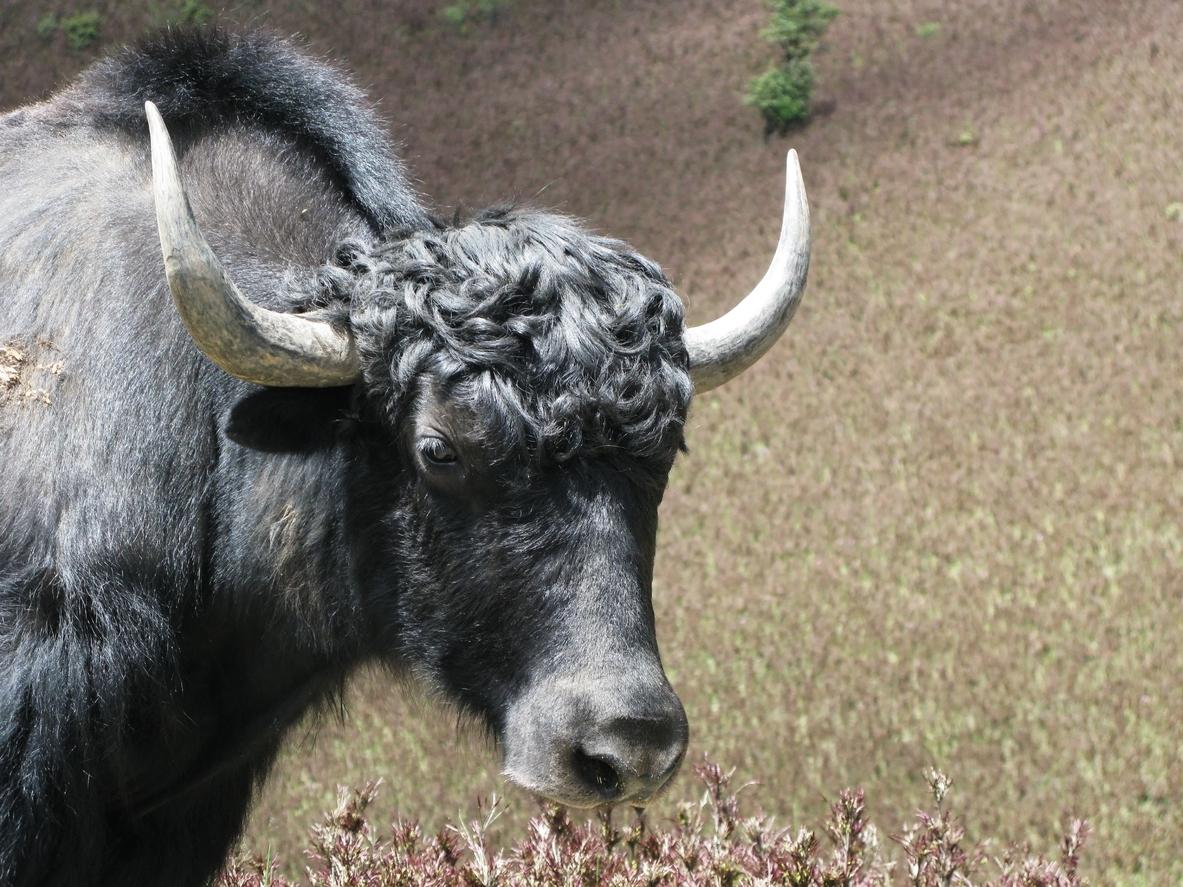Native Animals of the Himalayas


The Himalayas, also called the Abode of the Gods, are the longest and highest mountain range in the world. The Himalayan mountain range stretches over 1,500 miles and covers the nations of Nepal and Bhutan, as well as the south of Tibet and the north of India; this range is at least 70 million years old.
Home to the world's highest peak, Mount Everest, the diversity of the Himalayan topography makes it one of the most famous natural habitats for animal species in the world. It is known for being cold - the name means "abode of snow" in Sanskrit - but its climate and vegetation types are varied, including tropical, subtropical, temperate and alpine regions; in the Himalayas you can find over 300 mammal species as well as thousands of different birds, reptiles, fish and amphibians.
With grasslands, temperate forests, ice covered peaks and a magnificent array of animals, the scenic Himalayas are divided into:
- Outer Himalayas, or Shivalik
- Lesser or Middle Himalayas
- Greater Himalayas, or Himadri
- Tibetan or Trans, or Tethys Himalayas
- Eastern Hills, or Purvanchal
Most of the animals in the Himalayan range have thick skin and fur for insulation, with an instinct that drives them to survival in this cold and ice covered ecosystem. The Himalayas are home to many endangered species of animals; more than 160. Many of them are on the verge of extinction due to climate change.
The Himalayan mountain range is protected by laws and international conservation groups. But will it continue to be a home to diverse flora and fauna in the times to come? As the world battles climate change, read on to know more about the now mostly endangered native animals of the Himalayas in this AnimalWised article.
- The Snow Leopard
- The Himalayan Wild Yak
- The Himalayan Blue Sheep
- The Himalayan Bears
- The Himalayan Musk Deer
- The Himalayan Wolf
- The Himalayan Tahr
- The Red Panda
- The Masked Palm Civet
- The Himalayan Marmot
- The Wild Boar
The Snow Leopard
Scientifically known as the Panthera uncia, the snow leopard is a large cat of the Felides family. It is found in the snow-capped peaks of the Greater Himalayas. As the snow leopard prefers steep, rugged mountainscapes with ravines and outcrops, it is tough to estimate the exact number of specimens left.
Its cousin, the Himalayan cat called the “clouded leopard”, is found in mainly northeast India in the Himalayan foothills. The snow leopard has been found to number less than 10,000, according to some estimates. An estimated number of around 7,000 snow leopards are currently left in the wild, making this leopard endangered.
Mostly found in the mountains of Central Asia, the snow leopard has thick hair which can serve to insulate the animal from the cold. An adult snow leopard is between thirty-fifty inches and weighs as much as 75 kg. With powerful limbs and bodies, snow leopards are known for their hunting prowess and can leap across a distance of 15 meters in one go.
Their fur is pale yellow or gray, and their paws and undersides are covered with snowy white fur - hence the name - showing the characteristic black or brown spots of leopards. Their fur helps them maintain a perfect grip on steep slopes and minimize heat loss. Found in summer at altitudes ranging from 2500 to 6000 meters, they descend to the lower level of the mountains in winter. Their chief means of sustenance include marmots, hares, and blue sheep.
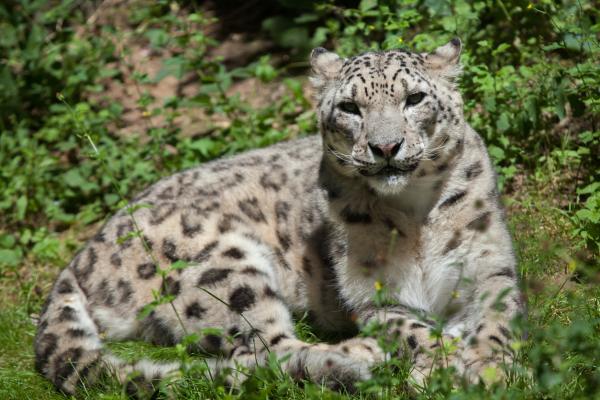
The Himalayan Wild Yak
Also known as Bos mutus, the Himalayan wild yak is a bovine with long hair. This massive herbivorous ruminant animal has a large, drooping head and a height of around 6 feet for the average male, making it one of the largest bovids in the world. The Himalayan wild yak is domesticated for its meat, fiber, milk and hide, and it's also used for carrying heavy burdens. Yak safaris are also popular among tourists.
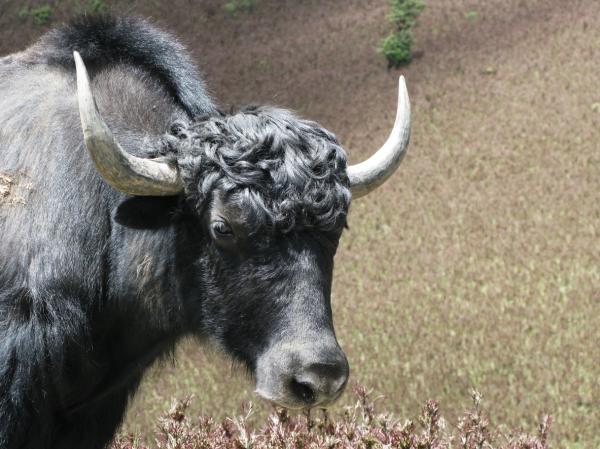
The Himalayan Blue Sheep
The Himalayan blue sheep (Psuedois nayaur) is also known as the bharal or naur. This is a goat-antelope native species of the mountain rainge, and it's found in higher Himalayan peaks, in the countries of Pakistan, Nepal, China and India.
Like the Himalayan wild yak, the bharal is a member of the Bovidae family. With a body measuring anywhere from 3.8 to 5.5 feet and weight of around 75 kg, the bharal has a short and dense bluish-grey coat and backward-pointing horns. The special coat color serves as a useful camouflage against Himalayan rocks when they are being preyed upon, as they are one of the most staple food for big cats in the Himalayas.
Himalayan blue sheep reside in rocky hills at 4000-6000 feet above the sea level. They live in herds of 10 individuals or more, and they graze the higher mountains where there is plenty of grass. They also feed on shrubs and herbs when grass is scarce.

The Himalayan Bears
There are twobear species in the Himalayas. One of them is the Himalayan black bear, a subspecies of the Asian black bear, and it's scientifically known as Ursus thibetanus laniger.
The Himalayan black bear has a white splash of fur across its chest. This is a large to medium sized bear, weighing around 120 kg and reaching about 75 inches in body length. The native habitat of this bear are rocky outcrops with caves, and it can be found mostly in the Greater Himalayas. Omnivorous in nature, Himalayan black bears consume just about everything, although they are partial to acorns, honey, nuts, fruits, roots, and insects.
In the summer season, Himalayan black bears reside at a height of 10,000 to 12,000 feet. With the advent of winter, they descend to lower levels of the Himalayan ranges. Himalayan black bears also undergo hibernation throughout winter and eat more in order to store fat to sustain themselves when the weather turns chilly.
The Asian black bear is a vulnerable species, as it is targeted by poachers for its skin and gall bladder. Black bears are also victims of habitat loss and degradation. Nowadays, Asian black bears can be found in Afghanistan, China, India, Myanmar and southern Russia; they are in the list of the 10 most dangerous animals in India.
The other native bear of the Himalayas is the Himalayan brown bear, also called "red bear". "Isabelline bear" or "Dzu-deh", which is a subspecies of the brown bear and it's known by scientists as Ursus arctos isabellinus.
The Himalayan brown bear is larger than the black bear, as it can reach 7'3'', although females are smaller; they are the largest animals in the Himalayas, and it is believed they are behind the tales of the Yeti. Their pelt is a beautiful reddish brown. Sadly, Himalayan brown bears are critically endangered and nowadays they can only be found in Nepal, Tibet and some northern areas of India and Pakistan.
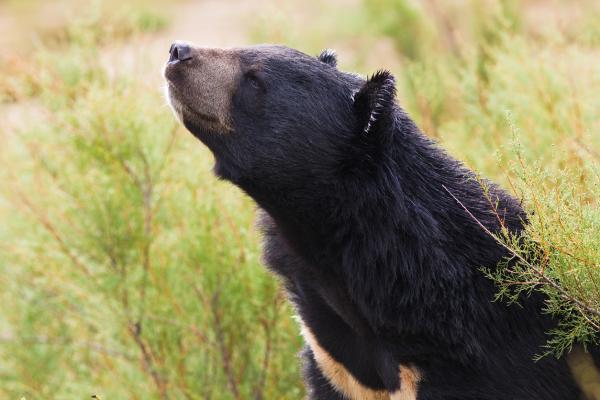
The Himalayan Musk Deer
The white-bellied or Himalayan musk deer (Moschus chrysogaster) is another of the native animals of the Himalayas. The natural habitat of the Himalayan musk deer is the hilly, forested ecosystem, where it can stay away from human settlements and eat grasses, leaves, and flowers. Therefore, musk deer are herbivorous animals.
The musk gland is found in male deer to attract mates. Sadly, like many other native species of this mountain range, the Himalayan musk deer is endangered. It is poached, as its musk glands are used to make perfumes.
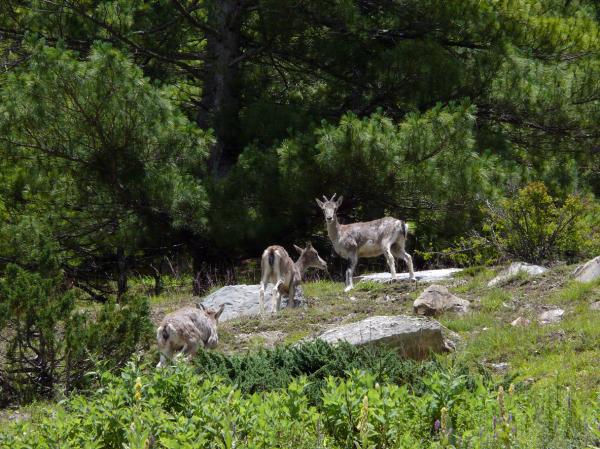
The Himalayan Wolf
Scientifically known as Canis himalayensis or Canis lupus chanco, the Himalayan wolf is a cousin of the gray wolf. Its status as a separate species is still being discussed, but scientists agree that it is an anterior evolutionary form. Here you can learn more about gray wolves and their hunting habits.
The Himalayan wolf is found in the cold climes of the Himalayan regions. Located in the remote wilderness of the Himalayan mountain range, this wolf is also present in Spiti Valley, in the hilly Indian state of Himachal Pradesh. This is one of the oldest species of wolves found in the world, and it is believed it represents the ancient lines of wolves in India.
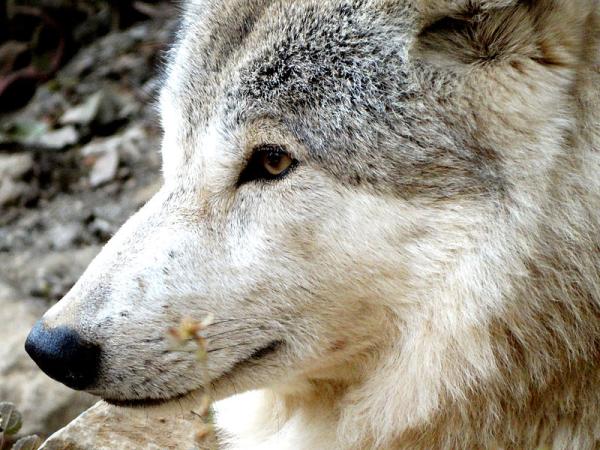
The Himalayan Tahr
Scientifically called Hemitragus jemlahicus, the Himalayan Tahr is a wild goat native to the mountain slopes and wooded Himalayan hills. Although it may be confusing, it does not belong to the same genus as the Arabian or the Nilgiri tahrs. However, they all belong to the subfamily of goat-antelopes.
During the harsh Himalayan winters, it grows a woolly coat ranging from red to dark brown with a thick undercoat to keep warm. In spring, the coat becomes lighter and thinner; Himalayan tahrs can regulate their body temperature throughout the seasons. With padded hooves that have smooth, rubbery cores providing excellent grip, this species is found at the steep mountain sides. Himalayan tahrs grow to 4 to 5.5 feet long and weigh between 36 and 85 kg. The horns of male Himalayan tahrs grow to about 18 inches, but those of females are shorter. They are used in duels during the mating season.
The Himalayan tahr subsists on grass, herbs, shrubs and trees found in the mountain range. During the day, these wild goats pace on the high hills and rest in herds of 20 to 60. They can move along the steep mountains with ease when predators are around. The Himalayan tahr is a near threatened species, and nowadays it can be found in Nepal, northern India and southern Tibet.
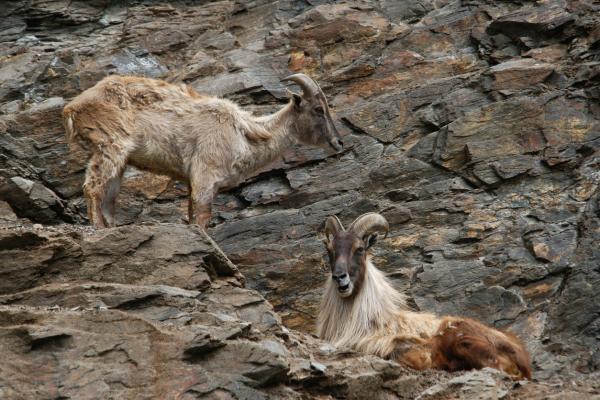
The Red Panda
Ailurus fulgens is the scientific name of this beautiful species native to eastern Himalayas and the northeastern states of India. The red panda, currently endangered, lives in temperate, deciduous and coniferous forests amidst bamboos and in hollow trees. It is declining in numbers due to habitat loss, population fragmentation and poaching. Only 10,000 red pandas can be found in the wild, according to the latest estimates.
This so-called panda has the head of a cat and is a small arboreal mammal. Fruits, acorns, roots and eggs form its staple diet. With big bushy tails and a body measuring 20 to 25 inches in length and weighing from 4 to 6 kg, their main distinctive feature is their tails, which measure 11 to 20 inches and have light and dark rings. Nocturnal animals by nature, red pandas only forage for food in the night.
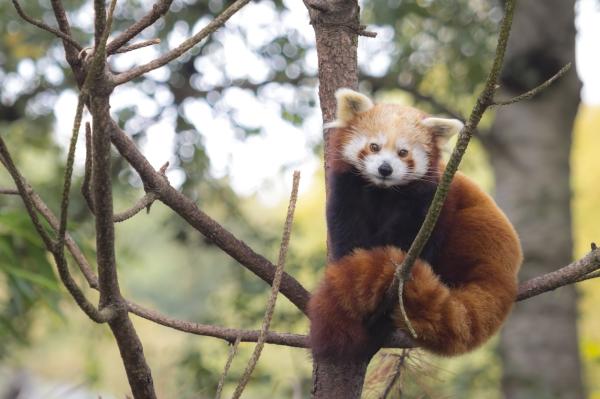
The Masked Palm Civet
Known scientifically as the Paguma larvata, the masked palm or gem-faced civet is found across southeast Asia, especially in the Himalayas.
The masked palm civet is different from other Indian civets on account of its white whiskers and lack of trace. With a very long tail and orange-brown to gray fur, this is a solitary predator during the nights and sleeps in trees during the day. Apart from fruits, it eats birds, insects, and squirrels.
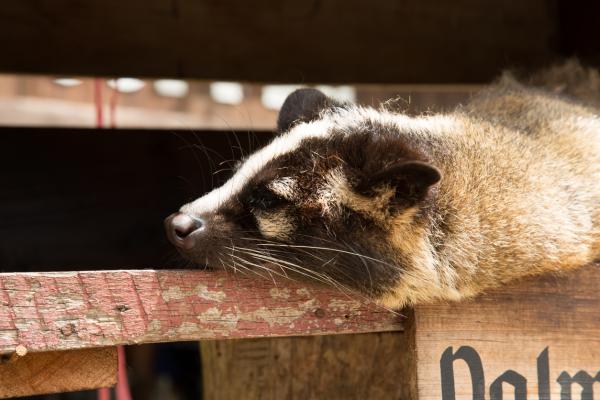
The Himalayan Marmot
The Himalayan marmot (Marmota himalayana) is a very social species. This adorable mammal lives in colonies of various sizes. Located in the Himalayan regions of Pakistan, Nepal, and India, this is one of the few mammals in the world that can be found at such a high altitude.
The Himalayan marmot inhabits dry alpine meadows with less rainfall. It is slightly smaller than the house cat and in contrast to other ground animals, it is large for its size. A herbivore by nature, the Himalayan marmot prefers leaves, fruits, roots, tubers, seeds, grains, and nuts.
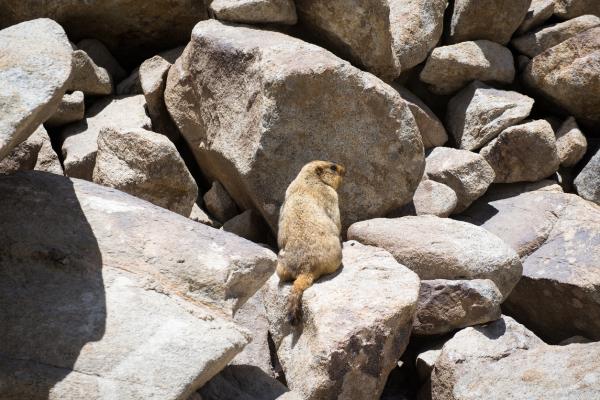
The Wild Boar
Scientifically referred to as Sus scrofa, the wild boar is a widely distributed mammal found not only in Asia but also in Europe and northwest Africa. There are around 16 subspecies of wild boar in the world. The Himalayan wild boar has a grayish-black coat and is a medium sized mammal. It measures 4 and 6.5 feet and weighs around 200 kg.
A thick coat is the perfect protection against the chill. This hairy animal also has a pair of tusks on the lower lip, which it uses to fight wars to get mates. The mating season is between November and January. Male wild boars have longer tusks compared to females, and both live in groups of 10 to 30. These nocturnal animals only come out at night for eating. They feed on insects, carrion, berries, nuts and roots generally; wild boars are omnivorous animals.
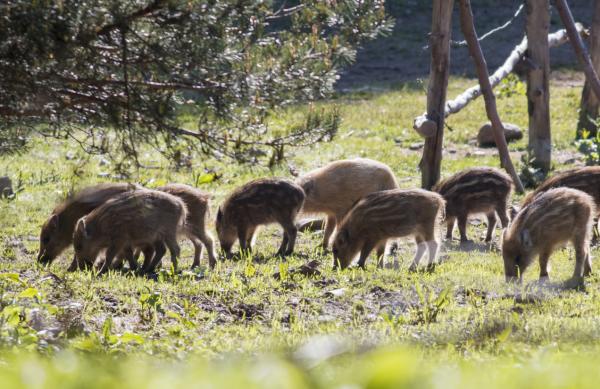
These are ten of the native animals of the Himalayas. Did we miss your favorite? Tell us in the comments section!
If you want to read similar articles to Native Animals of the Himalayas, we recommend you visit our Facts about the animal kingdom category.

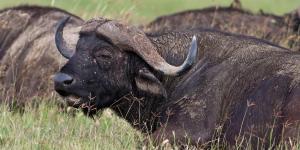




 Your opening commentary describes the range of the Himalayas. Why do you miss out PAKISTAN?!
Your opening commentary describes the range of the Himalayas. Why do you miss out PAKISTAN?!
